Switch of cleaning methods is reflected positively in the hygiene audit
27.06.2023
The highest hygiene requirements apply at the Foyer St. Joseph retirement home. To be able to meet these even more efficiently in future, the institution has switched to using two new cleaning methods: wet mopping with pre-wetted mops and damp wiping with foam. The outcome: excellent hygiene audit results. What are the factors that make these two new methods so hygienic?
The Foyer St. Joseph retirement home is located in Sierre, in the French-speaking part of Switzerland, surrounded by the Valais mountains. In this natural setting, the residents find the rest, support and care that they need due to their state of health. The retirement home comprises two connected ten-storey buildings. There are 121 rooms for up to 142 residents.
Nathalie Crescent is the Head of Housekeeping here. With her team of 25, she is in charge of the areas of cleaning, laundry, hospitality and banquets. She makes all decisions related to hygiene and cleaning at Foyer St. Joseph. The results of the external hygiene audits were always good in the past, but Nathalie Crescent wanted more than that. She wanted to take hygiene to a new level.

Focussing on hygiene and ergonomics
In addition to hygiene, Nathalie Crescent looked into another aspect of cleaning that she wanted to improve: ergonomics. She set herself the goal to create a working environment for her team that is as healthy as possible. More specifically, she no longer wanted for the staff to push around bucket units that are hard to manoeuvre, or to waste energy using the mop wringer, and she did not want them to inhale any more aerosols either. It soon became clear to her, that she had to focus on cleaning methods. So she turned to the Wetrok company for advice. After a number of conversations with experts and tests it was clear that two of the traditional cleaning methods had to be replaced with modern ones. For surface cleaning this meant that spray was replaced with foam. For floor cleaning, the dual bucket unit and mop wringer were replaced with pre-wetted mops.
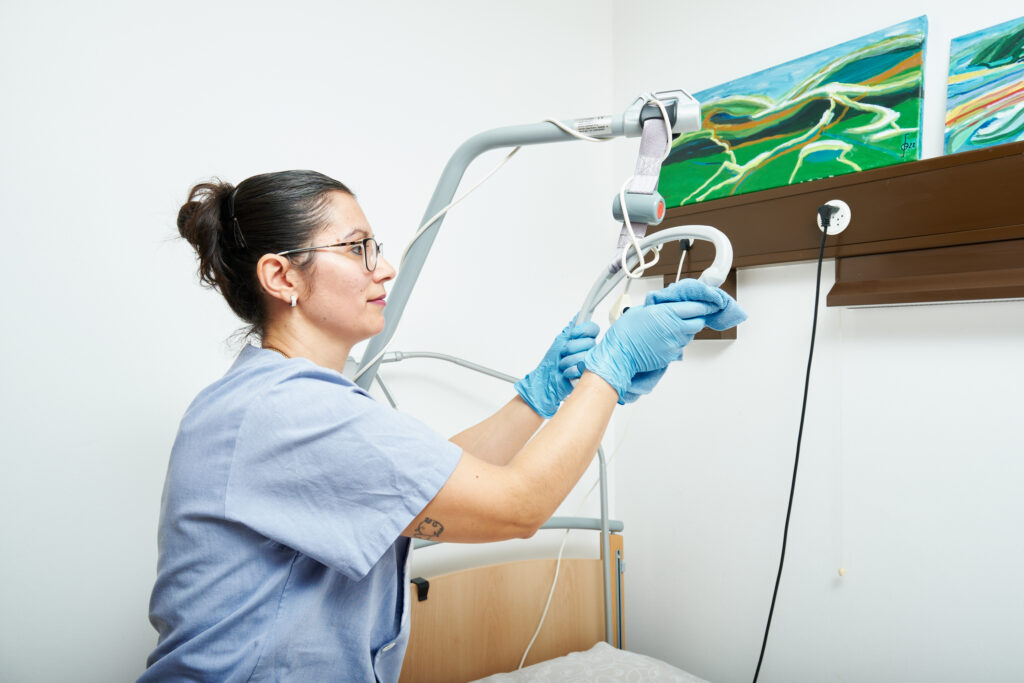
Pre-wetted mops instead of the bucket unit and wringer
“The bucket unit with the mop wringer and two containers for fresh and dirty water was bulky and hard to manoeuvre. In addition, the constant wringing of mops was an exhausting activity for our staff,” says Nathalie Crescent looking back. Every day, the Head of Housekeeping and her team need 220 mops for cleaning the floors of the entire building. For the new method, these are now prepared the evening before. To do so, the mops are placed in different boxes, then the cleaning solution is poured on and allowed to take effect. The next day, each cleaning staff member will grab a box of the prepared mops to use on their storey that is placed on the cleaning cart. The first step for cleaning the residents’ rooms is dust-binding mopping using a disposable cloth, and then the cleaning staff member will reach for a pre-wetted microfibre mop from the box that is used to mop the floor. When they move on to a new room, they move on to a new mop. A general rule at the Foyer St. Joseph retirement home is that each mop is used for just one room. This is done to prevent cross-contamination of germs from one room to another. It is now much easier to monitor this approach: the exact required number of mops is prepared in the morning and the risk that a mop is accidentally dipped into the waste water tank after cleaning a room is eliminated entirely. “The mops are moist rather than wet, which makes them glide across the floor more easily. This also allows us to use them on sensitive parquet flooring, and the cleaning result is better, too,” Nathalie Crescent is happy to report. In addition, the fringe mop that was used in the past was prone to getting stuck on small irregularities, which no longer happens with the smooth microfibre mops, she adds. It was only after the switch that Nathalie Crescent realised that the new cleaning method was also a huge gain with regard to environmental aspects: “With the bucket unit we always had to discard huge amounts of water and cleaning solution at the end of the day. For the new method of using pre-wetted mops, we use around 85% less water.”
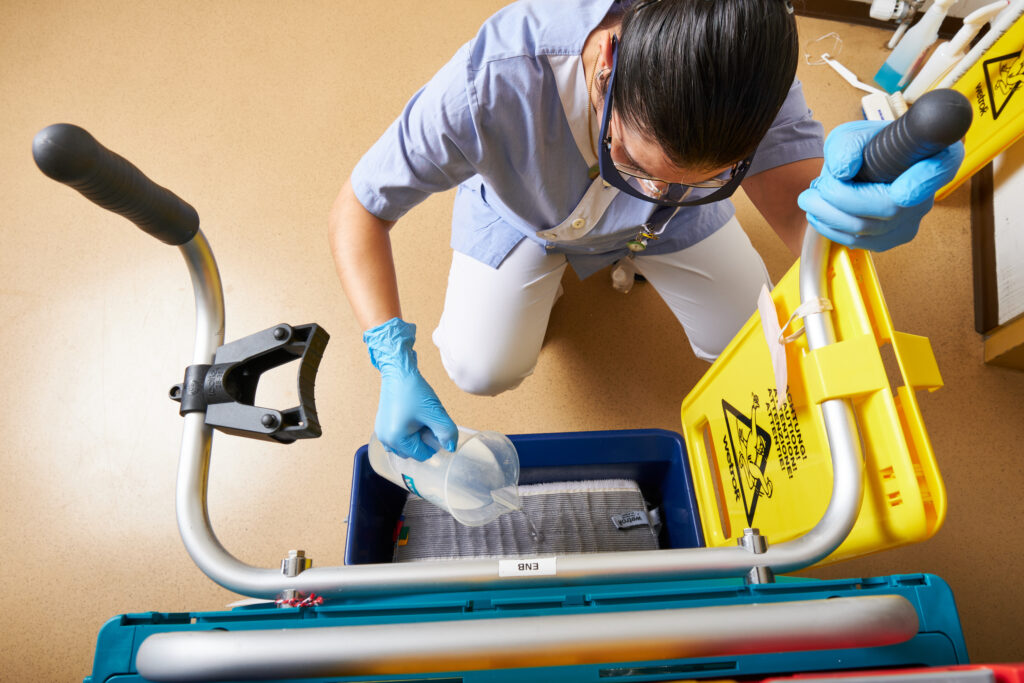
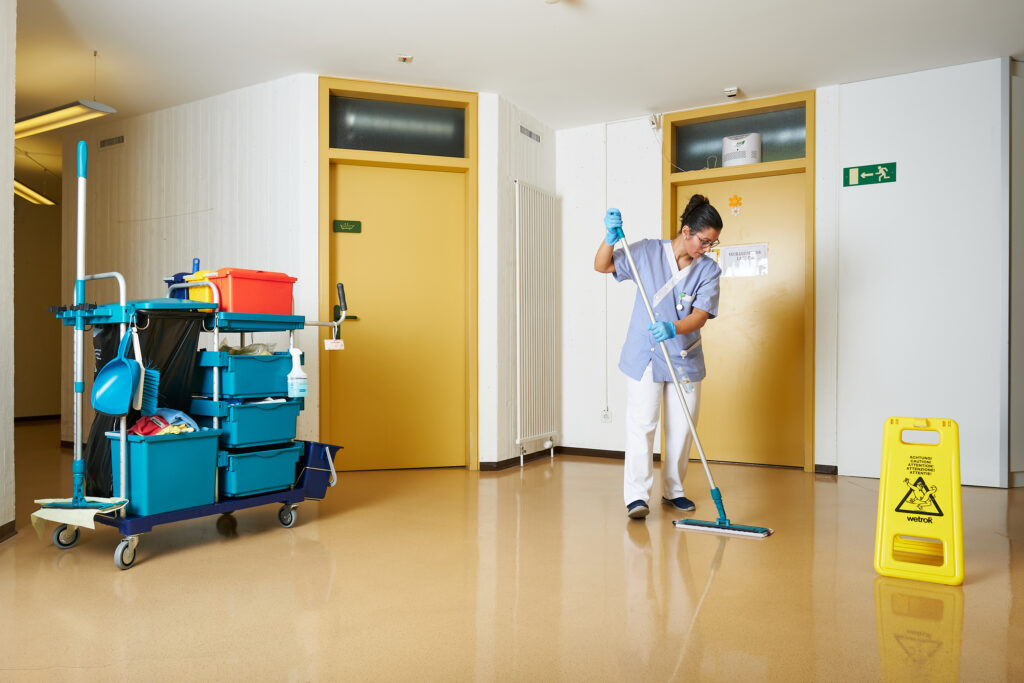
Foam instead of spray for surfaces and sanitary facilities
Many factors were improved by switching to new methods, also when it comes to surface and sanitary cleaning. “In the past, we used various sprays for cleaning surfaces. These had the big disadvantage that aerosols were emitted with each pump, and this wasn’t good for the quality of the air that both our staff and the residents are breathing,” Nathalie Crescent remembers. In addition, the cleaning team used to disinfect the microfibre cloths used with the spray before moving on from one room to the next. To do so, the microfibre cloth was immersed in a bucket with disinfectant solution. This work step has now been eliminated, as the staff uses foam rather than spray for cleaning. The cleaning staff members use a special bottle for this. It is filled with water up to the first marking, and then the cleaning product is added up to the second marking. Cleaning foam will now escape from the opening of the bottle, and this foam can be easily applied to a microfibre cloth. When switching to foam, Nathalie Crescent was also able to drastically reduce the number of products used: the new products are a surface cleaner (bedside tables, handrails, bed rails, etc.) and a sanitary cleaner (wash basin, shower, toilet), and that’s it. Thanks to the high cleaning performance of the new foam methods, a special folding method for cloths and even stricter rules for switching cloths, it is no longer necessary to perform disinfection every day. As a result there is more room on the cleaning cart and work processes are more efficient and straightforward.
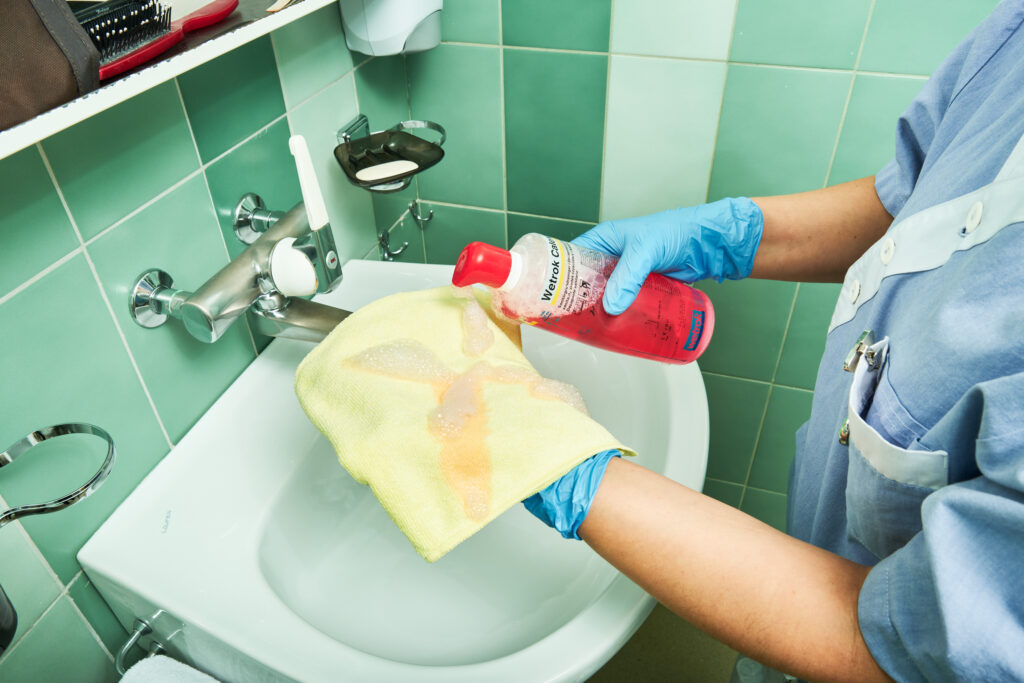
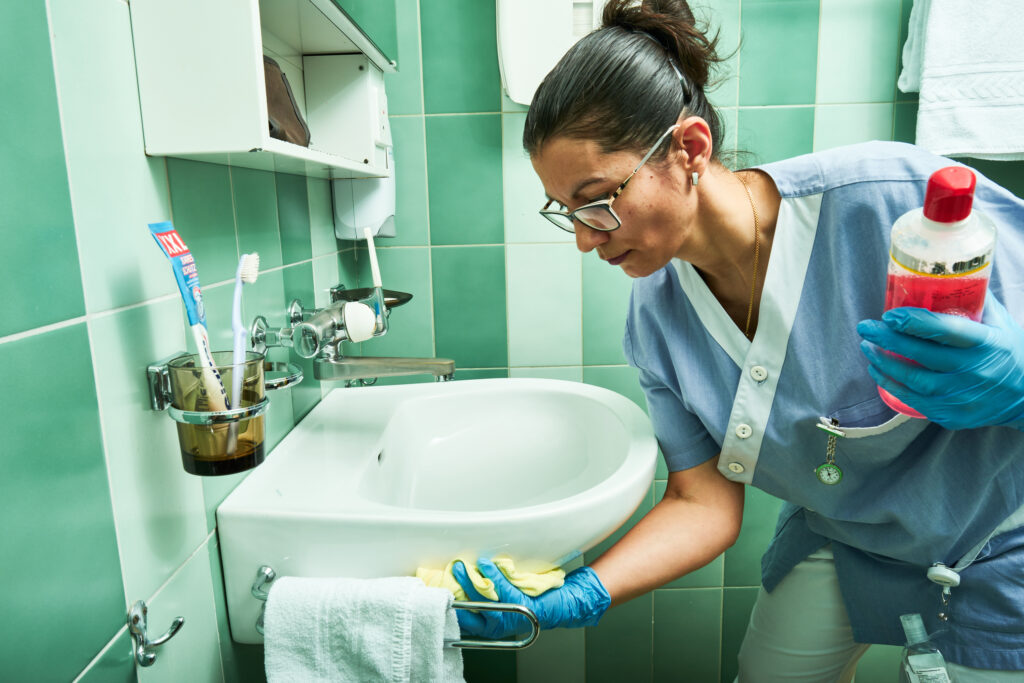
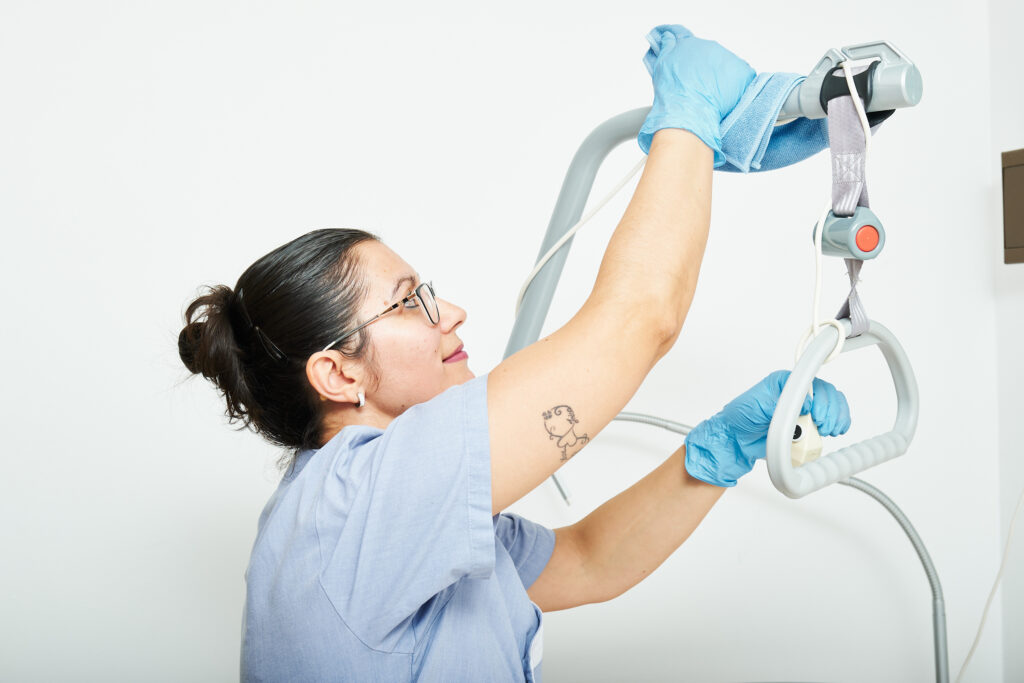
Hygiene audit confirms positive effect of the new methods
The first hygiene audit since switching to the new methods took place in August 2022. Nathalie Crescent awaited this day eagerly. The audit showed that her efforts had been worthwhile: it was attested that the hygiene standards at the institution are excellent. “We always did well, but never as exceptionally well as this time. It is a proven fact that the choice of cleaning method is key with regard to the level of hygiene achieved by a business,” says Nathalie Crescent, who is very pleased about this confirmation.
Values symbolised by wild geese
The management is also happy about this success. “It reflects our values that are part of our logo. The logo shows wild geese, who live in groups. Towards the end of its lifetime, the entire group will be with the dying goose until it takes its final breath. And we do the same for our residents,” says the facility’s director Jean-Michel Bagnoud, explaining the philosophy of Foyer St. Joseph. He adds that the flight of these migratory birds also stands for a future-oriented approach and for the obstacles that must be overcome between embarking on a journey and reaching one’s goal. This concept applies to cleaning, too: “Our successful hygiene audit shows that by switching to modern cleaning methods we have arrived in the future, and have removed all sorts of hygiene obstacles. Just like a wild goose, we also reached our goal, which is the highest possible level of hygiene,” Jean-Michel Bagnoud is proud to point out.
The cleaning methods used at Foyer St. Joseph are as modern as the food preferences of the facility’s residents are traditional. Visitors to the website learn that 111,970 portions of the Swiss cheese speciality raclette were served at the facility since its foundation. This goes to show that Foyer St. Joseph is an institution that ideally combines modernity and tradition.
